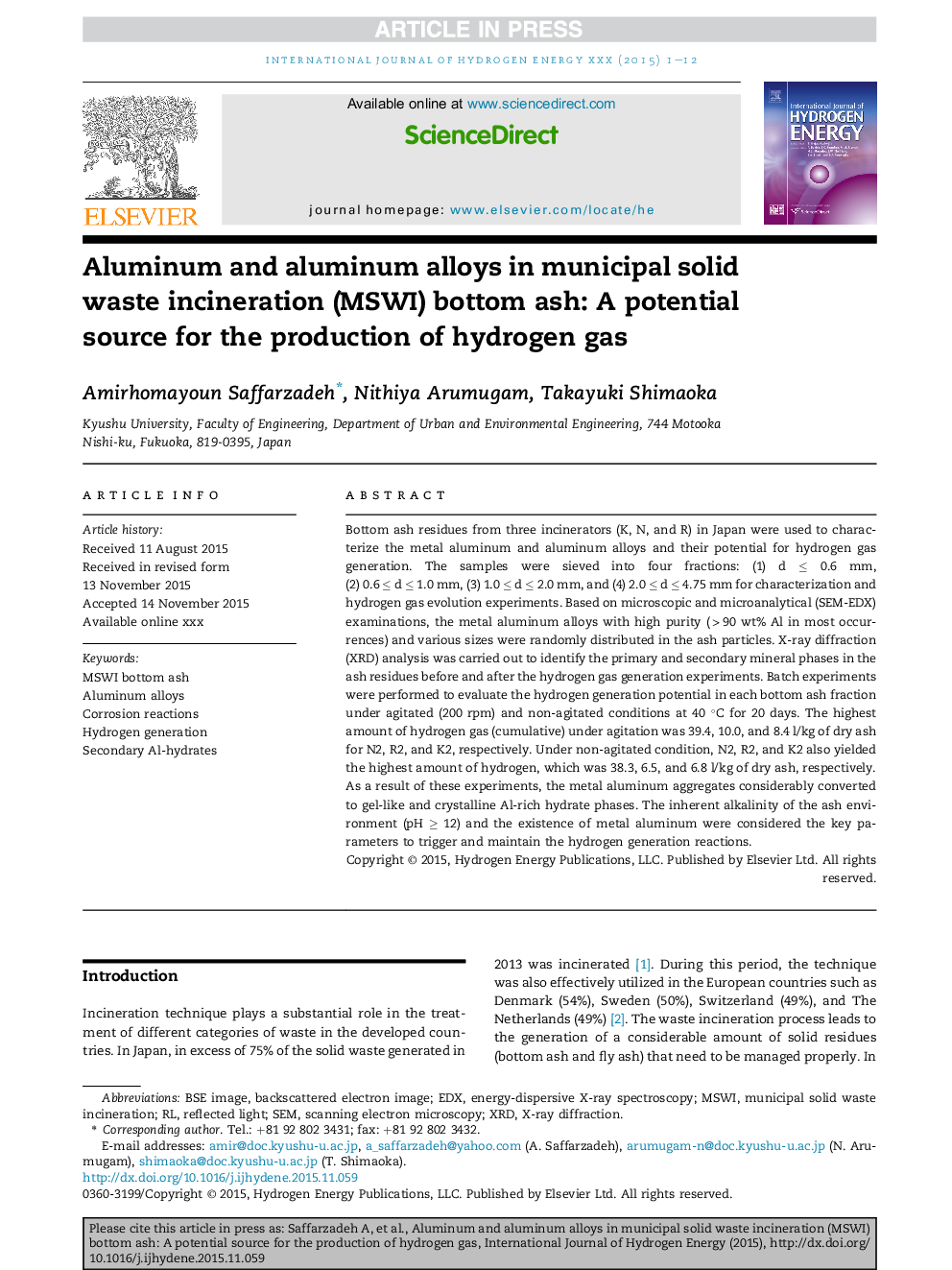| Article ID | Journal | Published Year | Pages | File Type |
|---|---|---|---|---|
| 7712473 | International Journal of Hydrogen Energy | 2016 | 12 Pages |
Abstract
Bottom ash residues from three incinerators (K, N, and R) in Japan were used to characterize the metal aluminum and aluminum alloys and their potential for hydrogen gas generation. The samples were sieved into four fractions: (1) d â¤Â 0.6 mm, (2) 0.6 â¤Â d â¤Â 1.0 mm, (3) 1.0 â¤Â d â¤Â 2.0 mm, and (4) 2.0 â¤Â d â¤Â 4.75 mm for characterization and hydrogen gas evolution experiments. Based on microscopic and microanalytical (SEM-EDX) examinations, the metal aluminum alloys with high purity ( > 90 wt% Al in most occurrences) and various sizes were randomly distributed in the ash particles. X-ray diffraction (XRD) analysis was carried out to identify the primary and secondary mineral phases in the ash residues before and after the hydrogen gas generation experiments. Batch experiments were performed to evaluate the hydrogen generation potential in each bottom ash fraction under agitated (200 rpm) and non-agitated conditions at 40 °C for 20 days. The highest amount of hydrogen gas (cumulative) under agitation was 39.4, 10.0, and 8.4 l/kg of dry ash for N2, R2, and K2, respectively. Under non-agitated condition, N2, R2, and K2 also yielded the highest amount of hydrogen, which was 38.3, 6.5, and 6.8 l/kg of dry ash, respectively. As a result of these experiments, the metal aluminum aggregates considerably converted to gel-like and crystalline Al-rich hydrate phases. The inherent alkalinity of the ash environment (pH â¥Â 12) and the existence of metal aluminum were considered the key parameters to trigger and maintain the hydrogen generation reactions.
Keywords
Related Topics
Physical Sciences and Engineering
Chemistry
Electrochemistry
Authors
Amirhomayoun Saffarzadeh, Nithiya Arumugam, Takayuki Shimaoka,
